The term SEO was introduced in 1997. Three decades on, it appears we’ve reached an inevitable end. Or have we? Can we really say SEO is dead?
If we take at face value the conversations on social media, then we might think so. But when we dig, we find that SEO—on-page and technical—is alive and kicking!

Truth is, technical SEO was never in jeopardy. Robots.txt, page speed, schema markup, canonical URLs, and other elements of technical SEO are still central to a site’s performance.
And so is on-page SEO. It isn’t dead. It’s evolving. The old playbook—keyword stuffing, spammy internal linkings, generalistic definitions—doesn’t convert anymore. But businesses are still leveraging SEO to generate leads, create brand awareness, and grow their revenue.
The strategies have changed. In this article, we’ll explore five of these strategies to level up your on-page SEO results. They are:
Explore content gaps
Infuse brand SEO into content processes
Create lead magnets
Create demo-led content
Work with SMEs
These strategies can make the difference between 0 and 100 inbound leads via SEO content. Let’s examine each.
Explore content gaps
There’s a common saying in literary writing—there are no new stories, only new perspectives to known stories.
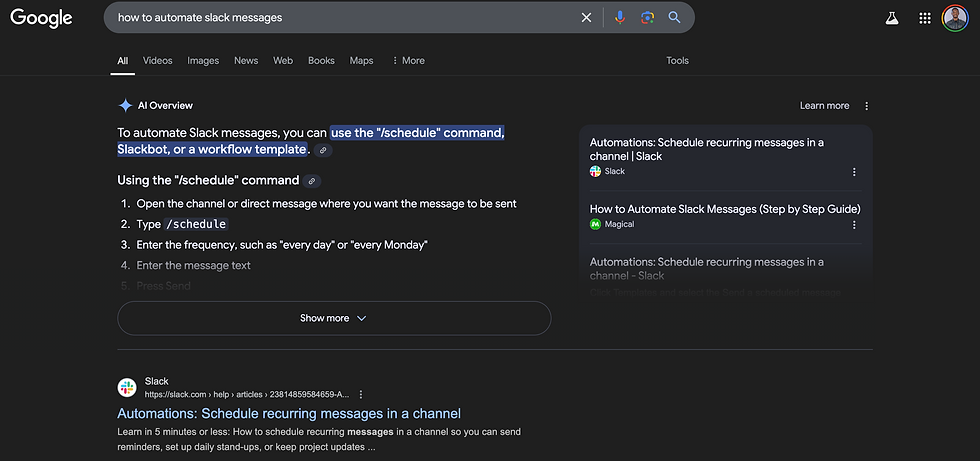
The same is true for content, whether in B2B or B2C. Everything informational—from how to automate Slack messages to how to make rib-eye steak—has been covered by hundreds of blogs, forums, and YouTube channels. So what does that mean for your on-page SEO strategies in 2025?
Ditch informational keywords
If AI can summarise everything in your article, then you need to rework the article. Aim for content that includes specific details.
This can be as simple as adding in-house data to your content briefs or as complex as sitting down with subject-matter experts (more on that later). Prioritise low-volume, long-tail keywords that answer specific search intents. Find out what your prospective readers are talking about online, and publish content that matches those queries.
Poke at the cracks
Say you run a crypto-focused blog. You may not need to write the next What is Web3 article, or an article for building a Web3 community. But you can create a resource for building a Web3 community, including tips by Web3 community managers, insights about community management within the crypto industry, etc.
Using this approach, you cover areas that are largely unaddressed, and you also change your content’s primary competitors.
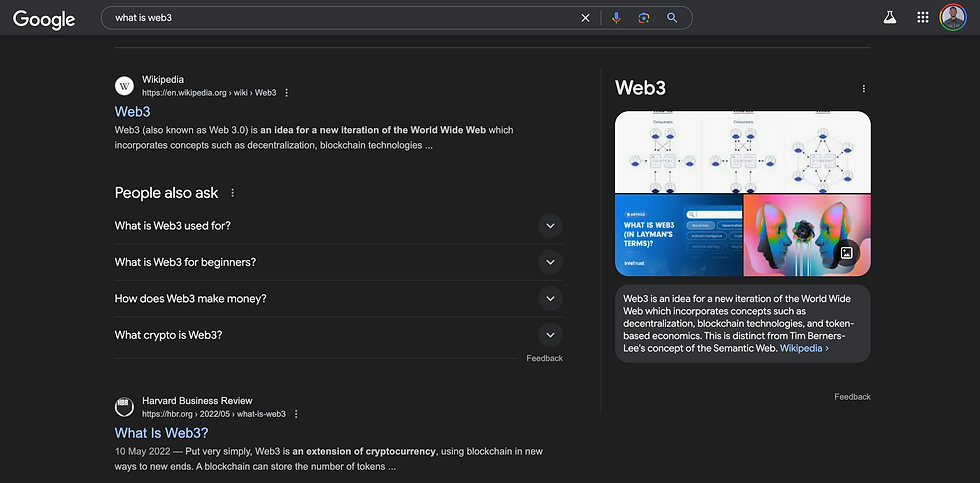
The top results for “What is Web3” include content from Wikipedia and Harvard Business Review. That’s hard to compete against, compared to results for “tips for building a Web3 community”.
Infuse brand SEO into your strategy
Four in ten search queries are branded. Tim Soulo, CMO at Ahrefs, identified this in a recent study to determine the volume of branded searches and search queries on Google.
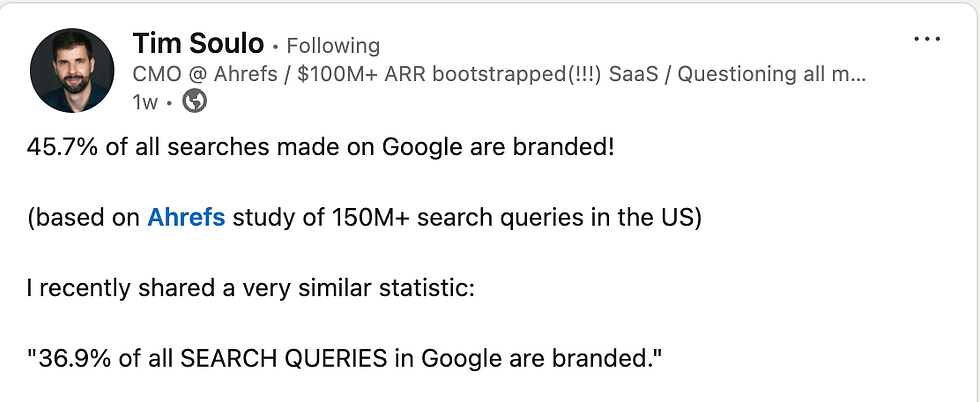
While non-branded search queries still matter, a winning on-page SEO strategy must serve both branded and non-branded intents. Branded search, as defined by AHRefs are those that, “contain your company, service, or product name.”
You can leverage this developing trend by:
Prioritizing brand presence in SERPs
Recently, while reviewing my company’s organic performance, I noticed that the top queries for an article included our brand name. This wasn’t surprising. The article was a BoFu piece on the best places, which included our brand, to shop fresh food online.
Don’t leave your brand’s organic appearance to the algorithm. Use branded content to dominate the first page of SERPs. Create pages covering everything about your brand, from services to unique offerings. Ensure that when users search for your brand, they see the best possible results.
Strengthening E-E-A-T
Despite rumours about the fallibility of EEAT, Google still prioritises content that shows expertise, authority, experience, or trust.
But this doesn’t mean you have to be overly technical with your content. Expertise, for your business, could mean adding a demo video that summarises an article into the article. Or getting insights from your CEO to develop a blog post.

Source: LinkedIn
Create lead magnets
A lead magnet helps you claim authority within and beyond your industry. Top B2B brands use this to drive awareness and retain consumers’ interest. Hubspot routinely publishes the State of Content Marketing report, and Superpath has published an annual Content Marketing Salary report for the last five years.
With lead magnets, you also increase lead generation and brand retention chances. Readers spend an average of 96 seconds reading a blog post. The number’s lower for B2B readers. And average engagement on most websites falls off after seven minutes.
Since lead magnets, such as reports, surveys, ebooks, and guides, are downloadable assets, users can repeatedly return to them without having to get on the internet or enter a search query. The easier a prospective or current user can access your brand’s content, the higher the engagement and retention chances.
Use case:
Last year, my company generated over 200 new leads after we published an industry report on food prices. A week ago, we published a free recipe resource and are already recording new leads. It works!
Create demo-led content
Storylane, a B2B SaaS product, offers a browser extension that lets businesses create interactive demos for users. They currently serve 2500+ customers, and saw a 900% jump in organic traffic through the last year.
Know what they did? Demo-led content. Given that the core product is a demo software, this SEO strategy might seem like a no-brainer. However, Storylane deepened their approach by creating dozens of pages filled with interactive demos and short texts. Away went the lengthy blog posts, the comprehensive blocks of text, and in came simple demo-led pages and blogs.
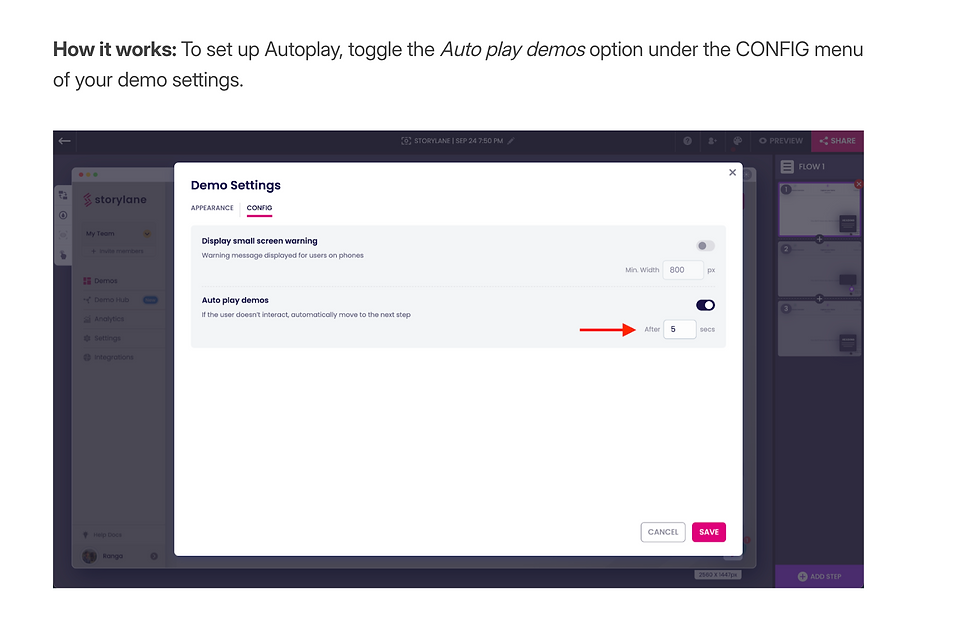
Should you then discard your guides and content clusters? No. Instead, focus on creating demo-led, product-led, and people-facing content. B2B brand? Show how your product solves the customers’ needs. B2C brand? Create short videos demoing how customers can navigate your product.
Deliver value from the get-go. Shift answers to the top of the page and leave the fluff behind. The shorter the time to value, the more improved your site’s organic performance.
Work with SMEs
To create authentic demo-led content and lead magnets, you need subject matter experts (SMEs). SMEs help you answer the reader's topmost question, “Why should I trust this article over hundreds of others?”
You know your content needs SMEs when:
There are dozens of competing content on the same topic.
You’re creating original, authentic assets such as industry reports.
AI can churn out similar content (for example, What is Web3)
The content is too niche or industry-specific and involves technical know-how.
You’re making bold assertions with the piece.
Want to foster trust? Want to show expertise? You need the input of SMEs. The average reader will respond better to a Salesforce vs Zoho article written by a Salesforce staff or that includes thoughts by in-house personnel, than one written by a B2B freelancer who doesn’t add expert thoughts.
You can source inputs from SMEs via:
SME platforms: Platforms like Qwoted and Help a B2B Writer connect content folks to industry experts. Some responses from these platforms can feel automated or generic, but you’d find value-adding feedback with tailored questions and requests.
Forums: There are hidden gems on Reddit, Quora, and other community-based forums. Want to know what readers are saying about a topic? Check the forums. You can filter results by using site:domain.com [subject]. For instance, site:reddit.com best laptop chargers.
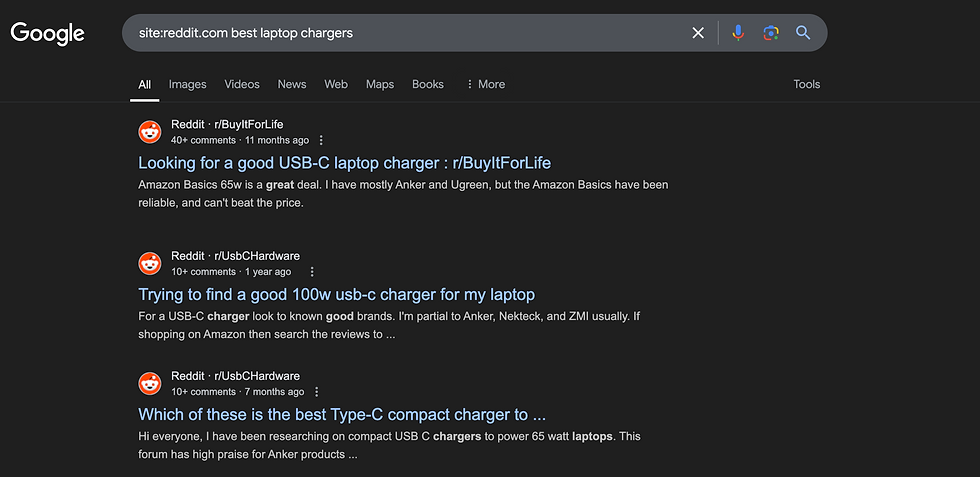
Social communities: When I had to publish an article on baking a cake at home, I connected with a baker I knew on Instagram and shared my request. Not only did she share the best tips for baking a simple cake at home, she also clarified that banana bread was indeed cake (imagine my shock!). The article remains on the first page of search results, several months after.
Here’s one thing worth keeping in mind: The goal of SEO is to create content that solves the reader’s problem, putting value first.
These strategies do the same—they let you create content that can’t be whipped up by AI. That’s content that resonates, content that outlives changes in the algorithm. Content that finds its way to the top of result pages.
Was this useful advice? You can find Michael Emmanuel on LinkedIn and on X.
Here's to creating more content that can’t be whipped up by AI!!